Kuranda Scenic Railway

Beez Neez now Chy Whella
Big Bear and Pepe Millard
Fri 24 Jun 2016 22:17
|
Kuranda Scenic
Railway
 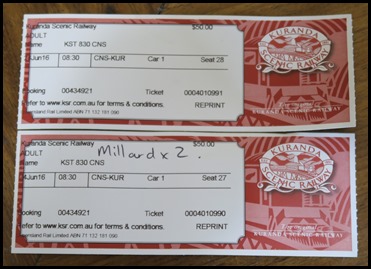 A very exited Bear stood outside Central Station at eight this morning. Tickets in hand, off to Platform One.
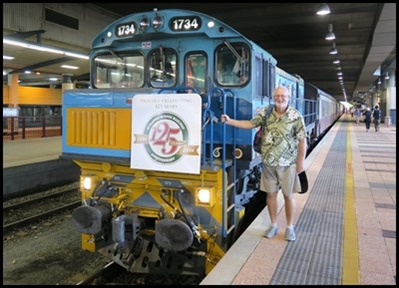  We walked to the important and and of
course, I got Bear to pose next to the engine,
brightly painted with the Buda:dji
(carpet snake).
Before climbing aboard we read the
sign: The lowland area of Cairns, where you are now standing, was once a
large natural swamp composed of sand ridges interspersed with freshwater
paperbark swamps and saltwater mangroves. Aborigines from the Irukandji, Idindji
and Konakandji clans used the area to hunt the abundant wildlife living in these
swamps and adjacent coastal waters.
Europeans were first attracted to
Cairns by the presence of a freshwater well, maintained by the Aborigines, where
the city centre is today. However, it was the discovery of gold at the Palmer
and Hodginkinson Rivers in the 1870’s that put Cairns on the map when its
suitable, natural harbour was
chosen to service the inland goldfields.
Cairns township began as a
collection of tents which housed three hundred citizens until the arrival of
timber from Maryborough in southern Queensland. The town was later transformed when rock and soil (from the quarries at
Edge Hill and Aeroglen) were used to fill the swamps. (Today’s streets still
follow the lines of the sand ridges.)
It soon became apparent that a
rail link to the coast was needed to service the tin-mining town of Herberton.
Rivalry was fierce between the ports of Innisfail, Cairns and Port Douglas, but
Cairns was eventually chosen for its superior harbour. The first eight miles of
track to Redlynch was opened on the 8th of October 1887.
A workforce of one thousand men
worked on the next fifteen miles which took the railway up the hazardous range.
This section, which included numerous bridges, ninety-eight curves and fifteen
tunnels, claimed many lives from falls, blasting, accidents, snake bite and
diseases such as malaria and scrub typhus. It was completed in
1891.
The railway journey has changed little over the last hundred years. Beyond the
line, a wilderness not very different to the one experienced by the railway
workers remains. We know that it contains some of the most precious tropical
rainforest on earth.
 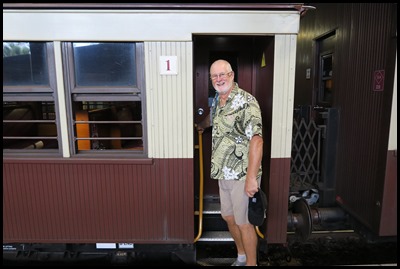 Looking down the
train and Bear gets aboard.
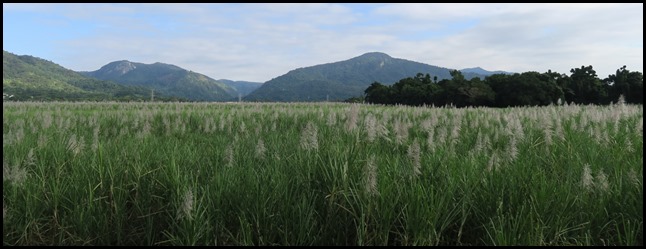 We pulled out at eight thirty, very
few passengers, twenty minutes later were out in the
countryside. The train pulled in to a station used by those needing to
park their cars, hundreds were waiting to climb aboard.
 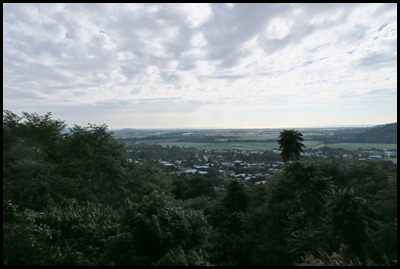 Our first look
along the train. The view after a steep
climb.
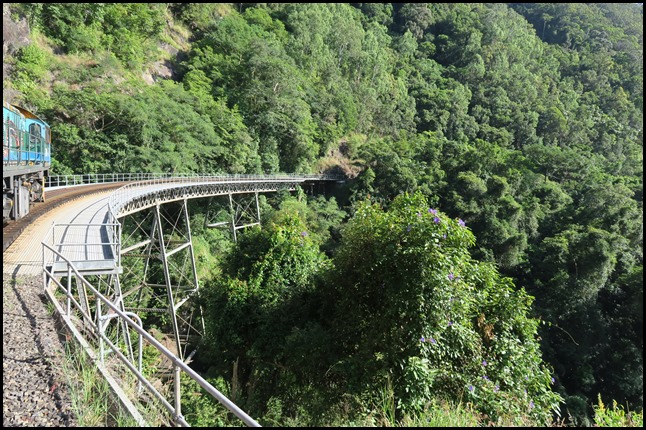 The view we had waited
for.
 The view from the
brochure.
   Our driver slowed down to allow us all
views of the Bridal Veil Falls on the
left.
 Looking
back as we crossed the bridge.
 The train and the
falls.
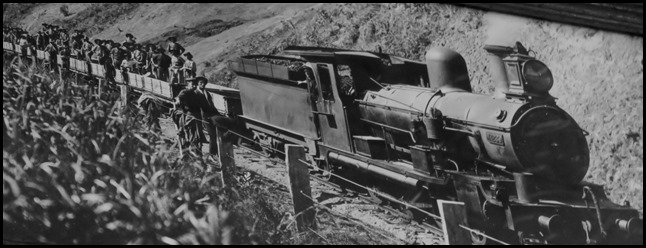 An old
picture...........
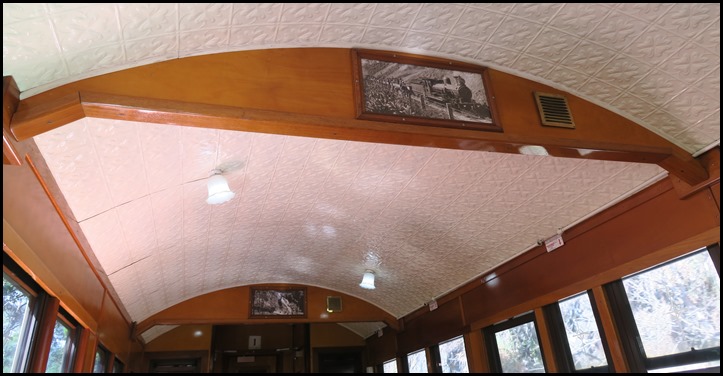 .........on one of the carriage roof supports.
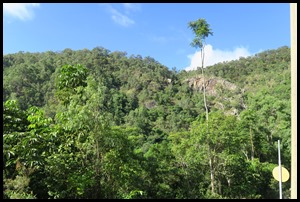 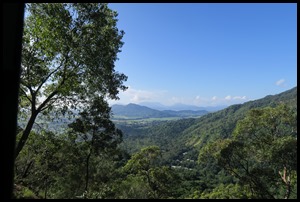 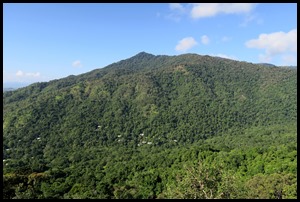 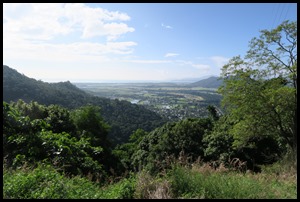 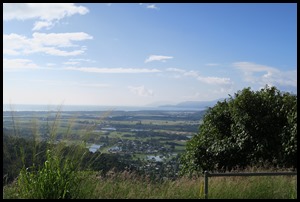 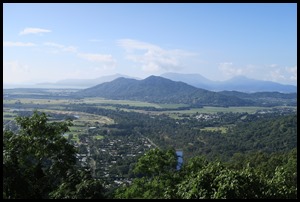 Scenery along the way
and Cairns
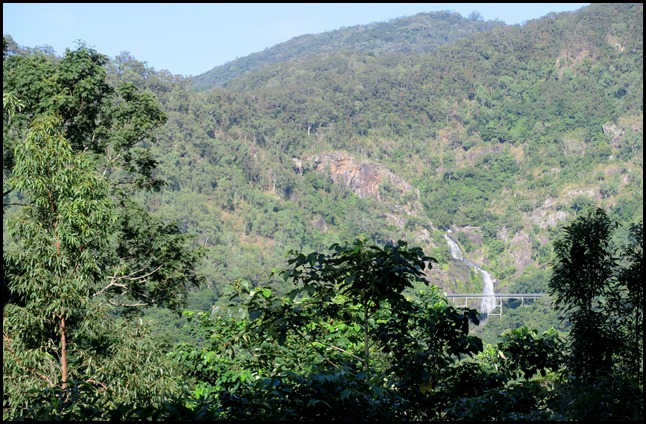 Looking back to the bridge and falls.
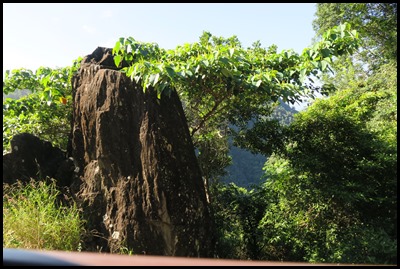 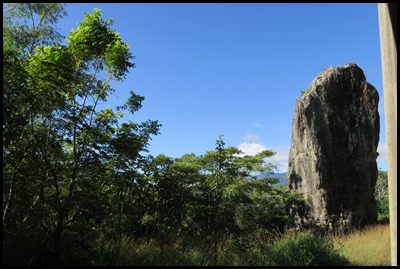 Massive granite
boulders. The second had the Italian flag flying due to the numbers of
immigrant rail workers.
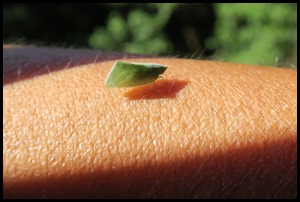 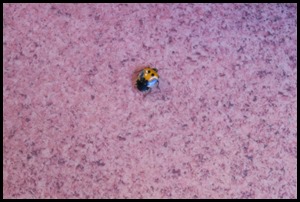 Tiny
visitors along the way.
 Our stop at Barron
Falls.
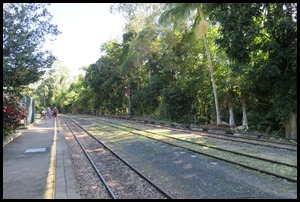 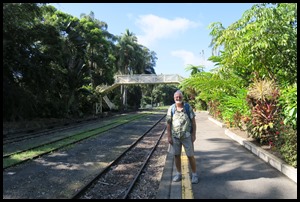 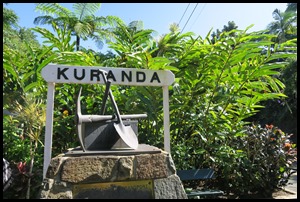 Kuranda
line and the station memorial.
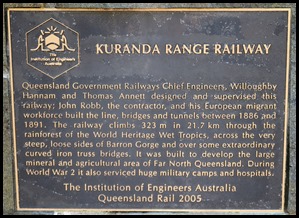 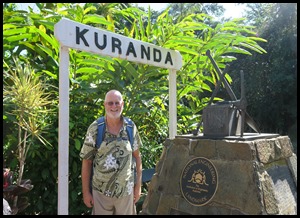 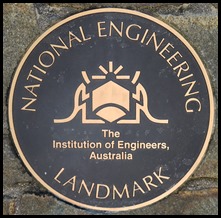 The
plaques.
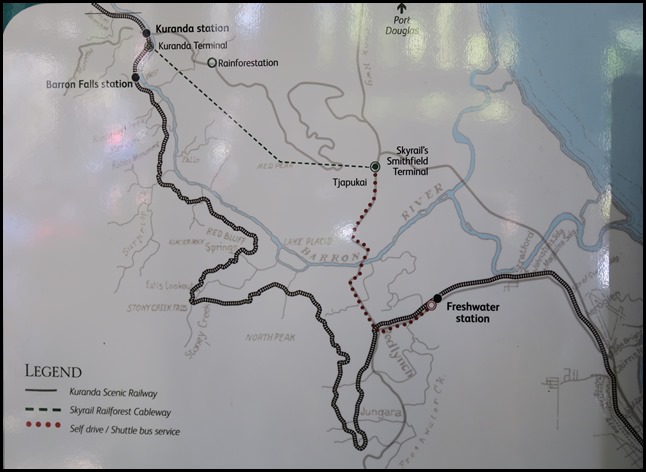 Our
journey.
 A lovely
refreshments menu in the gift shop-cum-cafe.
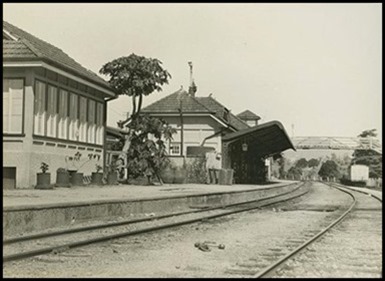  Kuranda
Station taken on the 1st of December 1924 and so similar today. Off to
explore Kuranda Village.
ALL IN ALL A WONDERFUL
JOURNEY
BEAUTIFUL SCENERY, AMAZING ENGINEERING FOR IT’S
DAY |